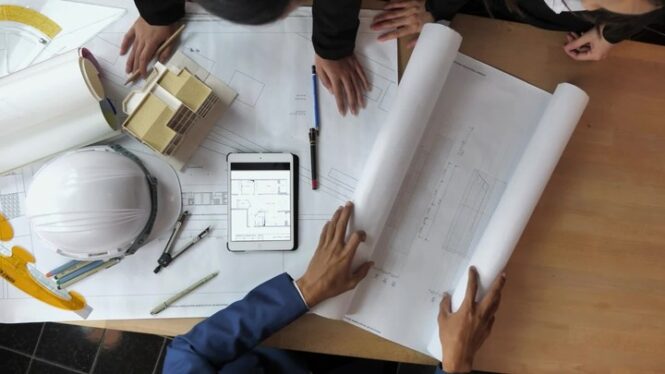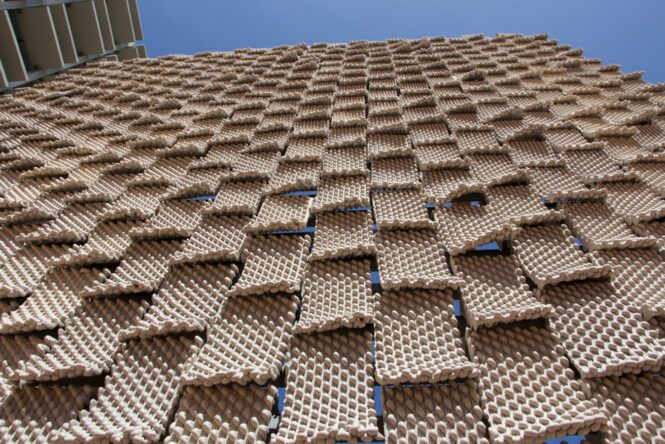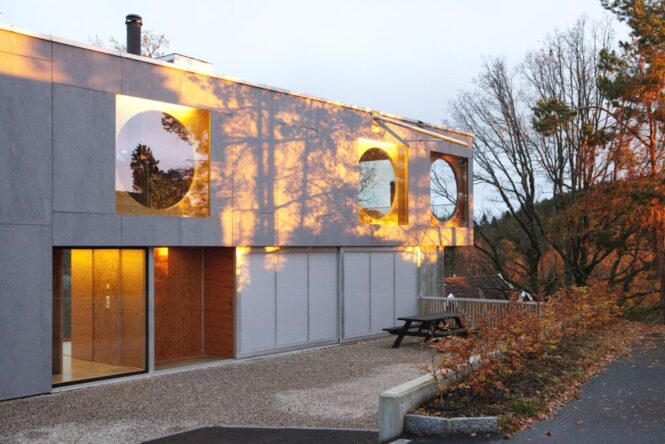Welcome to an enlightening exploration into the realm of unconventional building materials, where innovation, sustainability, and awe-inspiring designs converge. In the world of construction, the notion of using materials beyond the ordinary has sparked a revolution, inviting architects to push the boundaries of creativity and embrace unconventional solutions.

Gone are the days when bricks and concrete were the only players in the game. Now, we find ourselves mesmerized by the wonders of bamboo, shipping containers, and even living materials that breathe life into our structures. These unconventional materials not only offer sustainable alternatives but also unlock a treasure trove of design possibilities. Let’s learn about a world where transparent wood illuminates spaces, 3D-printed marvels defy convention, and recycled treasures breathe new life into our built environment.
Why do architects use unconventional building materials?

Unconventional building materials are often chosen over traditional materials for several reasons:
- Sustainability: Many unconventional materials offer more sustainable alternatives to traditional materials. They may be renewable, recycled, or have a lower environmental impact. For example, bamboo grows quickly and can be replenished rapidly, while recycled materials reduce waste and the need for new resource extraction.
- Unique properties: Unconventional materials often possess unique characteristics that make them suitable for specific purposes. For instance, transparent wood provides natural light transmission while maintaining structural strength. Textiles and membranes offer flexibility and lightweight construction options.
- Design flexibility: Unconventional materials can provide greater design freedom and flexibility for a residential architect compared to traditional materials. They may allow for innovative shapes, intricate detailing, or customization. For example, 3D-printed materials enable the creation of complex geometries that are difficult to achieve using conventional construction methods.
- Cost-effectiveness: In some cases, unconventional materials can offer cost advantages. For instance, using shipping containers as building modules can be more affordable than traditional construction methods. Additionally, recycled materials may be cheaper or more readily available than new materials.
- Energy efficiency: Certain unconventional materials have inherent energy-saving properties. For example, earth and mud construction techniques provide excellent thermal mass, resulting in improved insulation and reduced energy consumption for heating and cooling.
- Quick construction: Unconventional materials, such as pre-fabricated components or 3D-printed elements, can expedite construction processes. They often require less time for assembly or installation, leading to faster project completion.
- Aesthetics and uniqueness: Unconventional materials can introduce visually appealing and unique aesthetics to a structure. They may provide a distinct character or respond to specific design objectives, setting the building apart from conventional architectural styles.
- Cultural or regional relevance: In some cases, unconventional materials have cultural or regional significance. They can reflect local building traditions, respond to specific climate conditions, or support the use of indigenous resources, thereby preserving cultural heritage.
When it comes to picking building materials, there’s a lot to consider. Factors like project requirements, budget, local rules, and the architect’s creative vision all come into play. Unconventional materials aren’t used willy-nilly, but rather chosen with care. They’re like the special ingredients that add a unique touch to a building—sometimes as eye-catching accents, other times as the star of the show. The goal? To achieve specific objectives like being eco-friendly, pushing boundaries, or simply looking downright stunning.
What are the different types of unconventional building materials?

Unconventional building materials in architecture refer to materials that are not commonly used in traditional construction practices. These materials often offer unique properties, innovative design possibilities, or sustainable advantages. Here are some examples of unconventional building materials:
- Bamboo: Bamboo is a versatile and sustainable material with excellent strength-to-weight ratio. It can be used for structural elements, cladding, flooring, and furniture. It grows quickly and is considered a renewable resource.
- Shipping containers: Repurposed shipping containers have gained popularity in recent years for creating affordable and modular structures. They are durable, readily available, and can be transformed into various building types, such as homes, offices, and retail spaces.
- Recycled materials: Utilizing recycled materials like reclaimed wood, salvaged bricks, or recycled plastic can contribute to sustainable construction practices. These materials give a unique character to buildings while reducing waste and environmental impact.
- Earth and mud: Traditional techniques such as rammed earth, adobe, or cob construction use natural soil mixed with stabilizers like clay or straw. These materials offer thermal mass properties, excellent insulation, and a distinct aesthetic.
- Living materials: Researchers are exploring the use of living materials such as mycelium (fungi) or bacterial cellulose in architecture. These materials can be grown into desired shapes, offer biodegradability, and potentially provide self-healing capabilities.
- Ferrock: Ferrock is an innovative material made from recycled iron dust and industrial byproducts, like fly ash. It absorbs carbon dioxide as it cures, making it a sustainable alternative to concrete.
- Transparent wood: Developed through a process of removing lignin from wood, transparent wood retains its strength while gaining transparency. It can be used for windows, partitions, and other applications where natural light and aesthetics are desired.
- Textile architecture: Using textiles, fabrics, or membranes as building envelopes or structural elements is gaining popularity. These materials offer flexibility, lightweight construction, and can create unique shapes and dynamic spaces.
- 3D-printed materials: Additive manufacturing technologies allow the creation of complex structures using materials like concrete, plastic, or even recycled materials. 3D printing enables efficient construction, customization, and intricate designs.
- Geodesic domes: Geodesic domes are spherical structures made up of interconnected geometric shapes. They are constructed using lightweight materials like aluminum or steel and provide efficient use of space, structural stability, and energy efficiency.
In a nutshell, these examples we’ve touched upon are just the tip of the iceberg when it comes to unconventional building materials in architecture. Remember, the world of architecture is an ever-evolving playground, where boundaries are pushed, and possibilities are limitless. Architects are always on the lookout for fresh materials and techniques that can breathe life into their designs, making them innovative, sustainable, and drop-dead gorgeous.
 Imagup General Magazine 2024
Imagup General Magazine 2024



